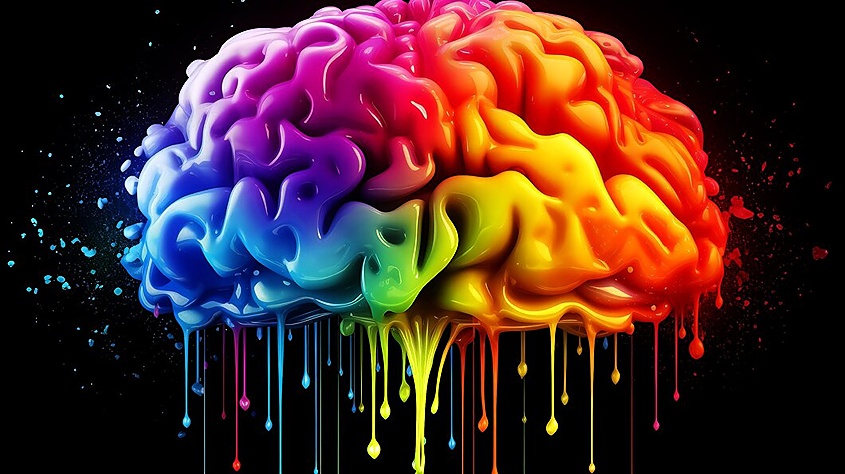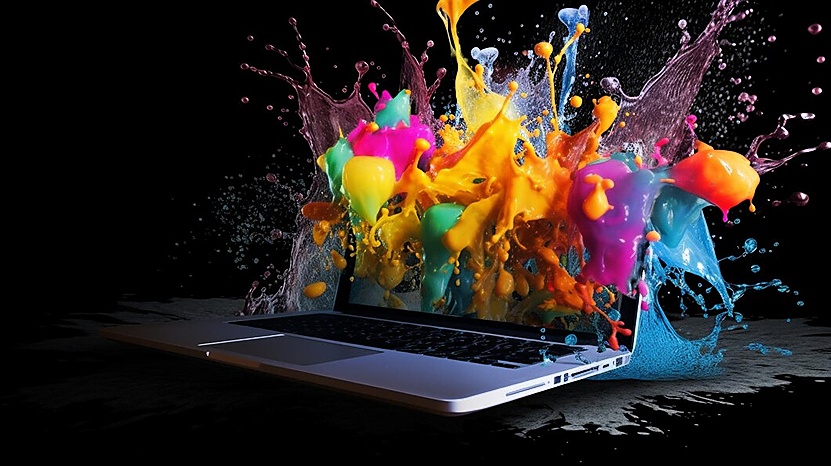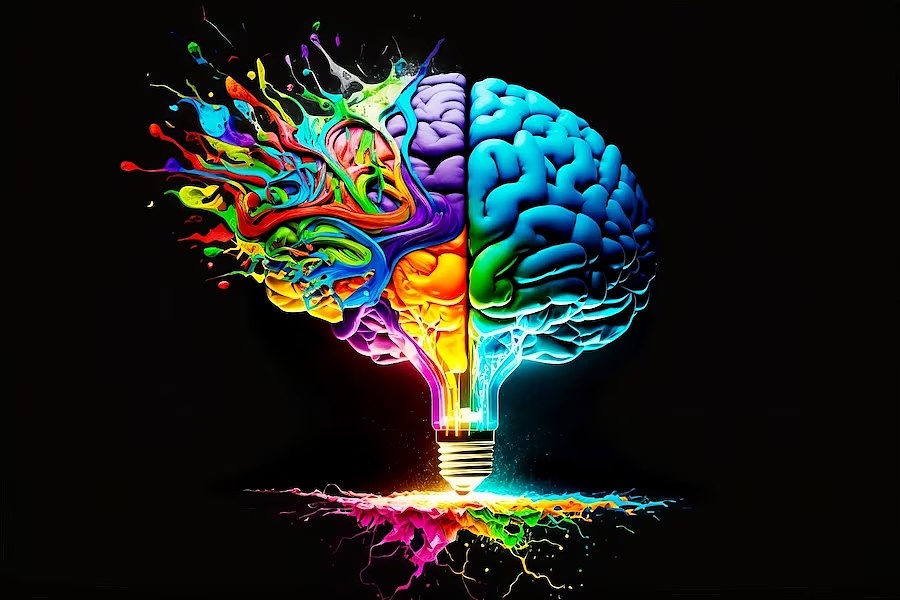Every effective branding and advertising effort is based on an in-depth understanding of color psychology. Colors have a unique power to arouse feelings, shape perceptions, and affect consumer behavior.
In this thorough guide, we’ll reveal the tricks of color psychology in marketing, arming you with the knowledge you need to maximize the power of color in your advertising campaigns. Get ready to take an exciting journey that will reveal the vast potential of color and turn your marketing efforts into beautiful works of art.
What Is Color Psychology?
Research on how color influences human behavior and emotions is known as color psychology. The connections that various colors, hues, and tones evoke influence a person’s mood and decision-making. Depending on cultural and personal choices, color psychology can differ.
Choosing colors that align with your company’s objectives and target market is essential in marketing since they can affect how consumers perceive various brands and products.
The 4 Psychological Colors
Psychological colors are frequently related to color psychology, which looks into how various hues might influence how people feel and behave. Despite the wide variety of theories and interpretations, the following four psychological hues are usually mentioned:
Red
The color red often evokes strong feelings like passion, enthusiasm, and urgency. It can arouse interest, create urgency, and increase hunger. Marketing frequently uses red to imply strength, vitality, and importance.
Blue
The color blue is frequently linked to sentiments of reliability, trust, and peace. It can engender a feeling of security, and brands frequently employ it to convey their professionalism, reliability, and trustworthiness. Blue is also believed to increase concentration and productivity.
Green
Green has a strong association with harmony, growth, and nature. It can make you feel calm, energized, and healthy. Green is frequently used in marketing to denote sustainable practices, eco-friendly products, and an overall feeling of well-being.
Yellow
The color yellow is linked to warmth, joy, and optimism. It has the power to attract attention and inspire excitement. Yellow is frequently used to represent vitality, brightness, and a positive perspective. Additionally, it can inspire creativity and cerebral activity.

The Human Perception Of Color
Human babies can only see in black, white, and gray colors. Red is the first primary color a baby acquires when they are about five weeks old. Up to about five months, they gradually gain color vision. They can now finally see all the colors because of their age. At this young age, people begin to understand and perceive color.
From the beginning, the color red starts to be linked with firetrucks, just as the colors yellow and green do with the sun and the greenery of the trees, respectively. Everything that color psychology is about is based on these early color perceptions.
In truth, every culture has its unique way of seeing color. Pink is typically linked with princesses and ballet dancers in the U.S.; however, pink is seen differently in Japan because it is the color of the cherry blossom.
Knowing these minute variations will enable you to target your advertising campaigns more effectively, particularly if your goods and services are available globally. There are some universal color perceptions, such as the “white lab coat effect.” This psychology of colors explains why most patients feel more secure and well-treated when a doctor is dressed in a white lab coat.
Reasons Why Color Combinations Are Important
Why do colors matter so much? Colors can provoke feelings, have significance in marketing, and become linked to a specific brand. Here are some reasons why picking the ideal color for your company’s identity is so crucial:
Brand Recognition
What hue comes to mind when you think about Home Depot? Orange, you say? Colors come to represent a brand. Marketers want a specific hue to be connected to their brand so that consumers can easily identify it.
Consistency
By establishing brand colors, marketers accept a predetermined color scheme. To maintain a consistent brand look, these colors will be employed for many years or perhaps for a company’s entire existence. In marketing, repetition is crucial since it helps people remember a brand.
Mood
A person’s mood can be affected by color. Bright yellow usually makes people feel cheerful, red usually makes people feel excited, and grey usually makes people feel peaceful. What tone do you want your brand’s logo to project?
Perception
Every color on the color wheel can influence how a consumer views your brand. Does your brand appeal to the consumer as exciting? Boring? Sad? Customers evaluate a brand based on its colors. This assessment shapes their perception of the business and its products.
Prevalently Used
The chosen colors will influence numerous marketing choices. The colors chosen will be used in everything from the corporate logo and website design to the packaging of products and stationery. They play a significant role in many discussions that involve making decisions.

Impact Of The Psychology Of Color On Marketing?
Color stirs up feelings. It sparks an interest in the consumer, and marketers try to capitalize on that. Customers respond to everything, including the brand’s color, product, packaging, and more. A brand color scheme that aligns with a firm, its beliefs, and its products can be developed by marketers who pay close attention to colors and how they affect people.
How To Use Color Psychology In Marketing?
Here are some tips on how to use the psychology of colors in marketing to increase its effectiveness now that we have a better understanding of what color psychology is and its impact on your marketing.
Understand Your Target Audience
Think about your target audience’s demographics, cultural heritage, and preferences. It’s important to make color selections that consider the different effects of different colors on certain groups.
Align With Your Brand Identity
Choose hues consistent with your brand’s personality, values, and position. Using colors consistently throughout your commercials, website, and branding helps create brand awareness and associations with your audience.
Emphasize Brand Message And Desired Emotions
Select hues that go along with the feelings and thoughts you wish to get across. For instance, blue can be a good choice to convey reliability and trust. Red or orange could be effective colors to evoke excitement and vigor. Keep in mind the sensations you want to convey when choosing colors.
Consider Color Combinations
Colors interact, and distinct effects can result from combining them. Complementary shades, opposite one another on the color wheel, can produce a striking contrast. On the color wheel, adjacent analogous colors can provide coherence and harmony. Try out several combinations to determine which ones work best for your brand.
Test and Measure
A/B testing should be done to evaluate the effects of various color selections. To gauge the success of color psychology in your marketing campaigns, keep an eye on metrics like click-through rates, conversion rates, and customer feedback. Based on the knowledge you have obtained, modify and improve your color choices.
Be Culturally Sensitive
As cultural connections with colors might differ between different locations and societies, keep this in mind. A color that evokes pleasant feelings in one culture could have a different meaning in another. When aiming for various markets, research and modify your color choices accordingly.
Special Considerations While Selecting a Brand Color Scheme
Here are a few other considerations to make sure marketers take into account the psychology behind colors in marketing:
Evaluate The Difference Between Warm, Cool, And Neutral Colors
Understanding the distinction between warm, cold, and neutral colors is a smart place to start for marketers who will likely do individual color research to determine how a certain color impacts a consumer. Warm hues like red, yellow, and orange are uplifting and refreshing.
Consumers are encouraged to feel peaceful, comfortable, and committed to cool colors, which include green, blue, and purple. Using neutral hues like white, black, and brown is frequently considered sleek, contemporary, and professional.
Reflect On The Colors Used By Big Brands
Looking at well-known brands’ colors can guide you when choosing colors for your brand. The distribution of colors used by popular brands is as follows:
- Blue: 33%
- Red: 29%
- Black, Grey, Silver: 28%
- Yellow & Gold: 13%
Since only a few brands employ colors like pink, brown, and white, they are not included in the list.
Keep In Mind: Colors Have Different Meanings In Different Cultures
It’s crucial to note that while color connotations for the U.S. are given in this guide, other nations and civilizations may have different perspectives on color. Red, for instance, symbolizes prosperity in China but grief or sorrow in South Africa. Ensure the place and culture on which your color theory is based are accurate.
Less Is More
Although brands will probably have a wide range of colors, most marketing initiatives only use two or three hues. Marketers shouldn’t believe they need hundreds of hues or variations on a single hue. Do not overthink it. Less is more.

Common FAQs Related To Color Psychology
Q1: Can color preferences influence buying decisions?
A: Definitely. By evoking particular feelings and connections, colors have the power to affect consumers’ purchasing decisions. A good choice of colors can increase the attraction of goods or services, elicit a sense of urgency, or increase perceived value, all of which have an impact on consumer behavior.
Q2: Are there the psychology of color in marketing that are specific to gender?
A: While studies have suggested that particular colors may be more frequently linked to particular genders, personal color choices can also vary. To find the best color combinations for your niche market, it’s crucial to investigate the demographics of your target audience.
Q3: Can colors influence user experience and website conversions?
A: The user experience and conversion rates of websites can be dramatically impacted by color selections. Choosing the right color combination may increase readability, direct users’ attention, and create a visually appealing and engaging interface, eventually increasing conversions and user happiness.
Q4: Can color selections affect how consumers remember and recognize brands?
A: Definitely. Brand recognition and recall are improved by using colors consistently in branding materials and marketing efforts. Colors can prompt instant awareness and strengthen brand identity in consumers’ perceptions when strongly linked to a company or product.
Q5: Should logo design take color psychology into account?
A: Color psychology should be taken into account when designing logos. A logo is a graphic representation of a brand that might elicit certain feelings or connections. A logo’s strategic use of color can assist in defining the intended brand personality and establishing a distinctive visual identity.
Discovering Your Palette
The post is almost through, but there is still no straight direction for picking the ideal hue or color scheme to hand. In actuality, we might have generated more queries than responses. The fact is that we might never have conclusive answers because of the kaleidoscopic character of color theory.
But just because there are a lot of “maybes” and “sort of” in a topic doesn’t imply we should stop analyzing it critically. The only reliable approach to arrive at improved answers is to challenge preconceptions and ask better questions by using the research that is already accessible.
In addition to exploring the complex world of color psychology, it’s important to partner with experts of video editing, 2D animation services, and 3D animation services who can bring your brand to life visually.



